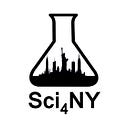Getting Federal Student Aid Applications Back to Pre-Pandemic Levels*
By Chris Guevara and Nancy Holt
The New York City Public School — the largest school district in the United States — is heading to the start of the school year once again with rising COVID-19 cases. One serious, but not frequently discussed impact of the pandemic on low-income students has been a substantial, nationwide decrease in Free Applications for Federal Student Aid (FAFSA) applications. We must redouble our effort to improve these outcomes by changing the overall outreach process to low-income students and by mandating FAFSA in NYC public schools.
FAFSA is an important tool for increasing college affordability, especially to low-income families. The rising costs of attending college further underscores the importance of this tool. Applications from current and prospective college students determine eligibility for state and federal aid. If the forms aren’t filled out, the allotted financial aid funds simply go unused — amounting to sums in the billions in past years.
The FAFSA process already had challenges pre-pandemic. One in three applicants stated that they struggled to complete the forms. Some of these problems have been attributed to the extensive questionnaire that comprises this application, which many cited as confusing and complicated.
FAFSA applications are generally a strong predictor of college enrollment. As of July 25, 2021, there has been a 5.5% drop in completion within NYC public high schools that have a high proportion of low-income students. This same student population has also shown lower rates of college enrollment this past year with respect to their higher-income counterparts.
For local Harlem high school students specifically, some schools have shown up to a 37% drop in the completion of FAFSA applications. Looking at entire NYC school districts, we also see this trend. For example, school districts 5–6, which predominately encompass Harlem, show a 65–74% completion rate in comparison to other Manhattan districts that have over 80%.
The time to fix FAFSA with new strategies is now — as past challenges are only being compounded by the pandemic. If not, we risk low-income students having a substantially harder time making academic progress than their counterparts.
One key step to address this issue is to provide resources to students tailored to specific concerns brought on during the pandemic. For example, many families are unsure how to accurately report their disrupted financial status during this past year. Being able to address such questions can help ease confusion hindering the completion of applications.
Efforts to clarify issues related to financial status during the pandemic would also help to generally bring more awareness to the flexibility of the financial aid process as a whole. This would also help far beyond the pandemic. Being familiar with options such as appealing your financial aid offer with your college would provide students the tools to navigate the entire process more confidentially.
Beyond outreach, NYC should look to host events around FAFSA applications with a focus on neighborhoods where FAFSA completion rates are notably low. They can follow the model of other states that have worked to mobilize resources into similar communities. For example, Missouri, Texas, and Wisconsin, host a variety of events that offer free help with completing FAFSA at campuses situated nearby lower-income communities.
The switch to remote learning presented challenges in school retainment and attendance. However, online resources also offer a potential advantage for FAFSA outreach if done thoughtfully — acting as a platform that can offer more flexibility to students.
NYC should also strongly consider mandating FAFSA as a requirement for graduation.
Such a step would further ensure that all students are able to fill out the application, unlocking their eligibility to receive federal and state aid.
This trend of mandating FAFSA has been gaining momentum — states such as Louisiana and Illinois have already such a requirement in place. In Louisiana, this change resulted in four in five schools achieving completion rates of at least 65%. In the year prior to the mandate, only one in three schools achieved this outcome. Other states such as California, Michigan and Indiana are also considering similar legislation. Closer to home, Newark, New Jersey has made applying for FAFSA a requirement for the graduating class of 2022.
While the pandemic has disproportionately impacted low-income communities, it also has given us new insight and perspectives on the barriers to completion of FAFSA applications. Addressing these challenges more aggressively with new and amplified FAFSA outreach — as well as potentially considering a mandate to complete the application in order to graduate — can help turn this difficult situation around.
Chris A. Guevara, MS is a Neuroscience PhD candidate in New York City and a member of Science for New York (Sci4NY), which positions local scientists to support decision makers through project-based interactions. On Twitter: @cristufer13.
Nancy Holt, PhD leads Sci4NY and holds a PhD in Physical Chemistry. Sci4NY can be reached at Sci4NY@gmail.com and on Twitter @Sci4NY.
* Originally appeared in Amsterdam News on 8/5/21.
